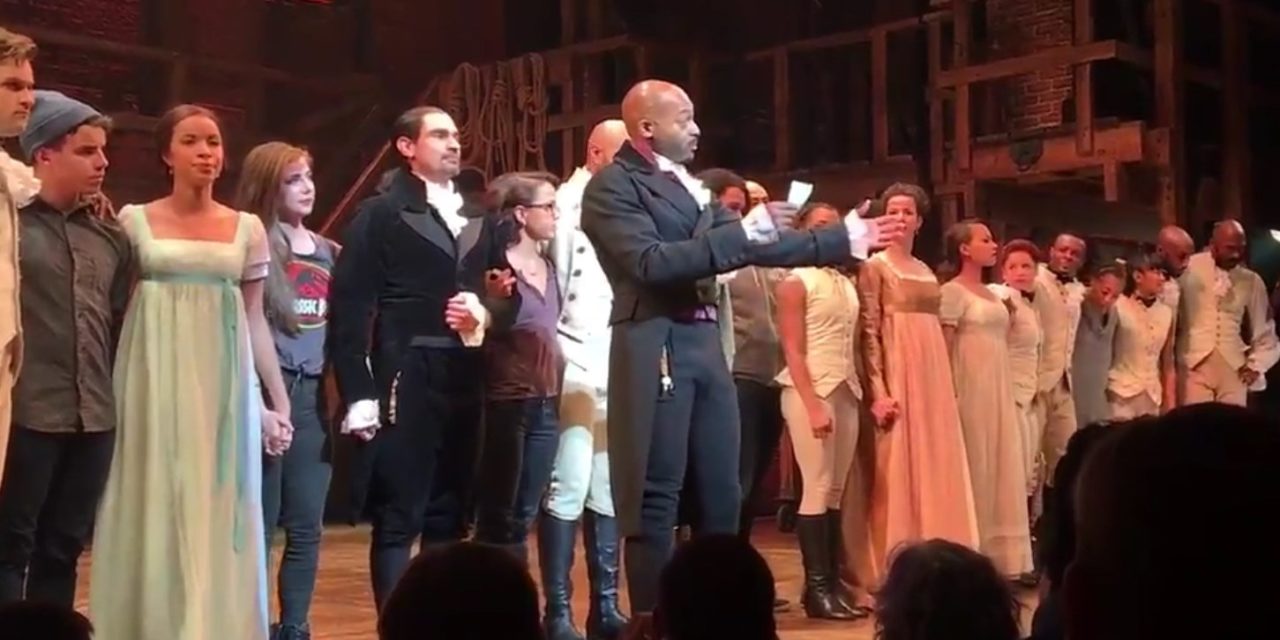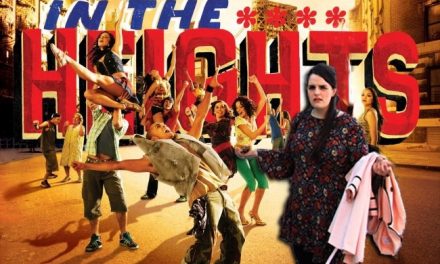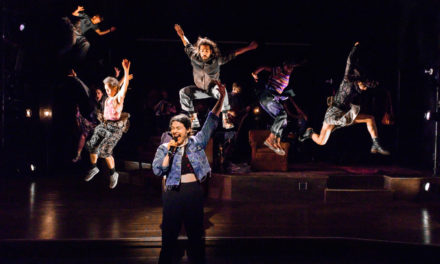Last Friday, VP-Elect Mike Pence attended a performance of the ground-breaking Broadway musical Hamilton. This sparked controversy as a statement from the cast met Twitter backlash from Donald Trump, who insisted the cast apologize, claiming that theatre should be a safe space.
Hamilton‘s Address
Following the performance, the cast addressed him directly during the curtain call, speaking to the concerns many Americans have regarding the imminent 45th presidency. Americans of color, LGBTQIA+ individuals, non-Christians (in particular Muslims), women, and others fear their hard-won rights will come under threat during the next four years. Brandon Victor Dixon, who plays Aaron Burr, read the following statement:
Tonight, VP-Elect Mike Pence attended #HamiltonBway. After the show, @BrandonVDixon delivered the following statement on behalf of the show. pic.twitter.com/Jsg9Q1pMZs
— Hamilton (@HamiltonMusical) November 19, 2016
The statement:
You know, we have a guest in the audience this evening. Vice President-elect Pence, I see you walking out but I hope you hear just a few more moments. There’s nothing to boo, ladies and gentlemen. There’s nothing to boo. We’re all here sharing a story of love. We have a message for you, sir. We hope that you will hear us out.
And I encourage everybody to pull out your phones and tweet and post, because this message needs to be spread far and wide, OK?
Vice President-elect Pence, we welcome you and we truly thank you for joining us here at Hamilton: An American Musical. We really do.
We sir, we, are the diverse America who are alarmed and anxious that your new administration will not protect us — our planet, our children, our parents — or defend us and uphold our inalienable rights, sir. But we truly hope that this show has inspired you to uphold our American values and to work on behalf of all of us. All of us.
Again, we truly thank you for sharing this show, this wonderful American story told by a diverse group of men and women of different colors, creeds, and orientations.
Trump’s Response
The following morning, Donald Trump fired back via Twitter at the cast, demanding they apologize for their “harassment” of Pence:
Our wonderful future V.P. Mike Pence was harassed last night at the theater by the cast of Hamilton, cameras blazing.This should not happen!
— Donald J. Trump (@realDonaldTrump) November 19, 2016, 8:48am
The Theater must always be a safe and special place.The cast of Hamilton was very rude last night to a very good man, Mike Pence. Apologize!
— Donald J. Trump (@realDonaldTrump) November 19, 2016, 8:56am
So let’s discuss this claim that “The Theater must always be a safe and special place.”
Conflicting Definitions of ‘Safe Space’
Safe spaces are at the zeitgeist of cultural conversations in America, as educators, creators, and consumers parse the arguments for and against both. A safe space, as characterized by Shane Windmeyer of Campus Pride, is a “welcoming environment” conducive to “dialogue and debate, where people feel always welcomed and accepted” and is “not about shutting down divergent ideas or opinions.”
This understanding of a safe space is not what Donald Trump refers to in the above tweets. Donald Trump’s “safe space” looks like an environment where individuals are not confronted by the ugliness of their world, asked to question their beliefs, or examine themselves. He seems to imply that theatre is a “safe space” because it provides an entertaining form of escapism.
Inclusivity and Dialogue
In the first sense of the term, theatre has been a safe space for years. Musicals like The Book of Mormon or Spring Awakening disclose elements of their content so audiences know what kind of strong content they may be in for. These content advisories enable individuals to make fully-informed decisions to see the show. Warnings precede the use of gunshots (which may trigger PTSD) and strobe lights (which may trigger epilepsy) in a performance. Certain shows offer sensory-friendly performances to accommodate autistic audiences. These warnings foster safe spaces, allow people affected by trauma and other experiences to engage with media and art to their fullest potential.
Theatres make an effort to create safe spaces for their audiences. They ensure patrons are shielded from unexpected and potentially traumatic content via these warnings. They do not, however, avoid incorporating, exploring, and commenting on said content. Tough subjects and disturbing experiences simply come with prior warning attached.
Donald’s “Safe and Special Place”
Donald Trump’s idea of a “safe space” seems to be a place where difficult conversations never happen. A place devoid of dialogue or dissent. A place where no one is nudged out of their comfort zone, and expression is limited in such a way that he need not confront the unpleasant parts of himself and his world. He seems to conceive of theatre artists as court jesters or marionettes: opinionless, voiceless performers whose job it is to entertain him. How dare they step out of line and challenge his status quo? This idea of a “safe space” resembles a media echo chamber. It reinforces already-formed beliefs while rejecting the disruption of unwelcome new perspectives. The status quo remains intact, and the audience remains unchallenged and unchanged.
An Unsafe Art
Theatre is not and never will be, by the definition implied in Donald Trump’s tweet, “safe”. The theater is a place to recognize and explore the full range of humanity. Playwrights, actors, and artists grapple with the messiest parts of life. They try to make sense of the world and the core of the human experience. They bring their rawest selves to the stage. Nothing is off-limits.
Theatre has not existed for thousands of years because it is entertaining. It isn’t simply a parade of puppet-like characters on stage, court jesters dancing at the pleasure of the king. Theatre delves into our humanity and reflects it back to us, that we might understand our world and ourselves differently. That is what has drawn us in for generations. Entertainment generally accompanies or springs from this, but it is not what drives theatrical art.
Terrifying and Exhilarating
The creative theatrical impulse stems from one question: “what do I want us to talk about?” Theatre sparks conversations. It invites differing interpretations, and urges audiences to reconsider the very pillars of their world. Theatre is a living, breathing entity that draws audience and performers alike out of their comfort zones and toward their raw selves.
No matter how conceptual or experimental a performance may seem, there’s humanity in it. Musicals often contain layers of spectacle or silliness, but at the heart of every piece of theatre is the barest expression of humanity. This openness, the vulnerable place that theatre must live, is anything but safe. It is at once terrifying and exhilarating. It lives in wild, unsafe spaces.
We do not go to the theatre to feel comfortable. We go to the theatre to feel, to experience, to question and think. Theatre is the fullest expression of our humanity, and it challenges the world its practitioners seek to better understand.
What about that could ever be safe?
This post was written by the author in their personal capacity.The opinions expressed in this article are the author’s own and do not reflect the view of The Theatre Times, their staff or collaborators.
This post was written by Sallie Bieterman.
The views expressed here belong to the author and do not necessarily reflect our views and opinions.
















